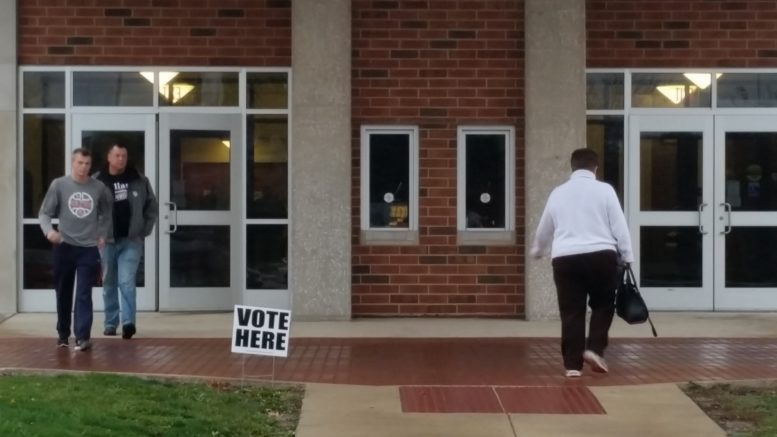By JAN LARSON McLAUGHLIN
BG Independent News
It’s not unusual for Bowling Green to be a bubble of liberal thought in Wood County. So when the General Election vote tallies last month in Bowling Green didn’t jive with the Wood County totals that went purely Republican, it was not a surprise.
But when a meeting was held last week on BGSU’s campus, one person in the audience brought up concerns about living in a community where the majority of the voters supported Donald Trump. That new realization gave him a bad feeling about Bowling Green that he hadn’t felt before.
So while it’s not a surprise, maybe it is worthy of a story that the majority of Bowling Green voters did not cast their ballots for Trump.
In Wood County, Hillary Clinton got just 42 percent of the vote. But in Bowling Green, she secured nearly 61 percent of the vote, with 7,161 votes for Clinton compared to 4,621 for Trump.
Clinton won in all four wards of the city – ranging from getting a high of 70 percent in the Second Ward to a low of 54 percent in the Fourth Ward.
Derrick Jones, assistant director of BGSU Academics and Assessment, said at last week’s meeting on campus that Wood County’s support of Trump as president called into question the inclusive and diverse philosophy of the university and surrounding community. He mentioned the Not In Our Town organization which works to stop hateful speech and discriminatory actions on campus and in the community.
“While we’re saying ‘Not In Our Town,’ we may be thinking, ‘definitely in our town,’” Jones said questioning how much that organization stands for the true feelings of the community.
Bowling Green also voted differently than the rest of the county in other races. This election year was decidedly one-sided, with only Republicans winning contested races in Wood County.
There were no tight races. Theresa Gavarone solidly beat Kelly Wicks for the state representative seat. Dr. Ted Bowlus unseated Wood County Commissioner Joel Kuhlman – meaning for the first time in several decades the three commissioners will all be Republicans. Matt Reger won the judge seat, Mark Wasylyshyn was re-elected as sheriff, Craig LaHote was returned as county commissioner, and Jane Spoerl won handily as county treasurer.
Wood County voters also re-elected Republicans Bob Latta to the House of Representatives, Randy Gardner to the Ohio Senate, and swung their weight for Rob Portman in the U.S. Senate.
But Bowling Green voters did not consistently follow suit with the rest of the county. A majority of BG voters threw their support toward Democrats Strickland (51 percent), Wicks (57 percent), Kolanko (54 percent), Kuhlman (60 percent), and Ruth Babel Smith for sheriff (51 percent). In BG, Democrat Jason Hartigan earned 50 percent of the vote for county treasurer.
The more liberal voting First and Second wards, on the east side of the city, even gave a majority of their votes for James Neu for Congress, and Kirk Halliday for State Senate. Overall in Wood County, Neu earned just 35 percent of the vote, and Halliday got just 32 percent.
That knowledge has helped some local Democrats who were unpleasantly surprised by the overall election results.
“I felt destroyed after the results came in, and when I discovered that BG was an ‘island’ of rational thinking, I felt relieved,” said Sandy Lepper, of Bowling Green. “I shared this data with several of my known Democratic friends and they also were very happy to have that knowledge – the ‘we are not alone’ thinking.”
The local results were consistent with other elections – especially when the presidency is at stake, said Wood County Democratic Chairman Mike Zickar.
“These results show that Bowling Green has become reliably Democratic at the state and national levels, especially during presidential elections when students turn out at higher levels than in non-presidential elections,” Zickar said.
And for those who work with elections every year, again no surprise.
“One could look at the council make-up and it’s obvious,” Wood County Board of Elections Director Terry Burton said. Currently, only one of seven members on Bowling Green City Council is a Republican.
That liberal leaning is customary for university towns, such as Ann Arbor, Michigan, and Madison, Wisconsin, Burton said.
“Those kind of communities tend to be more Democratic,” he said. “It doesn’t surprise me that much.”

